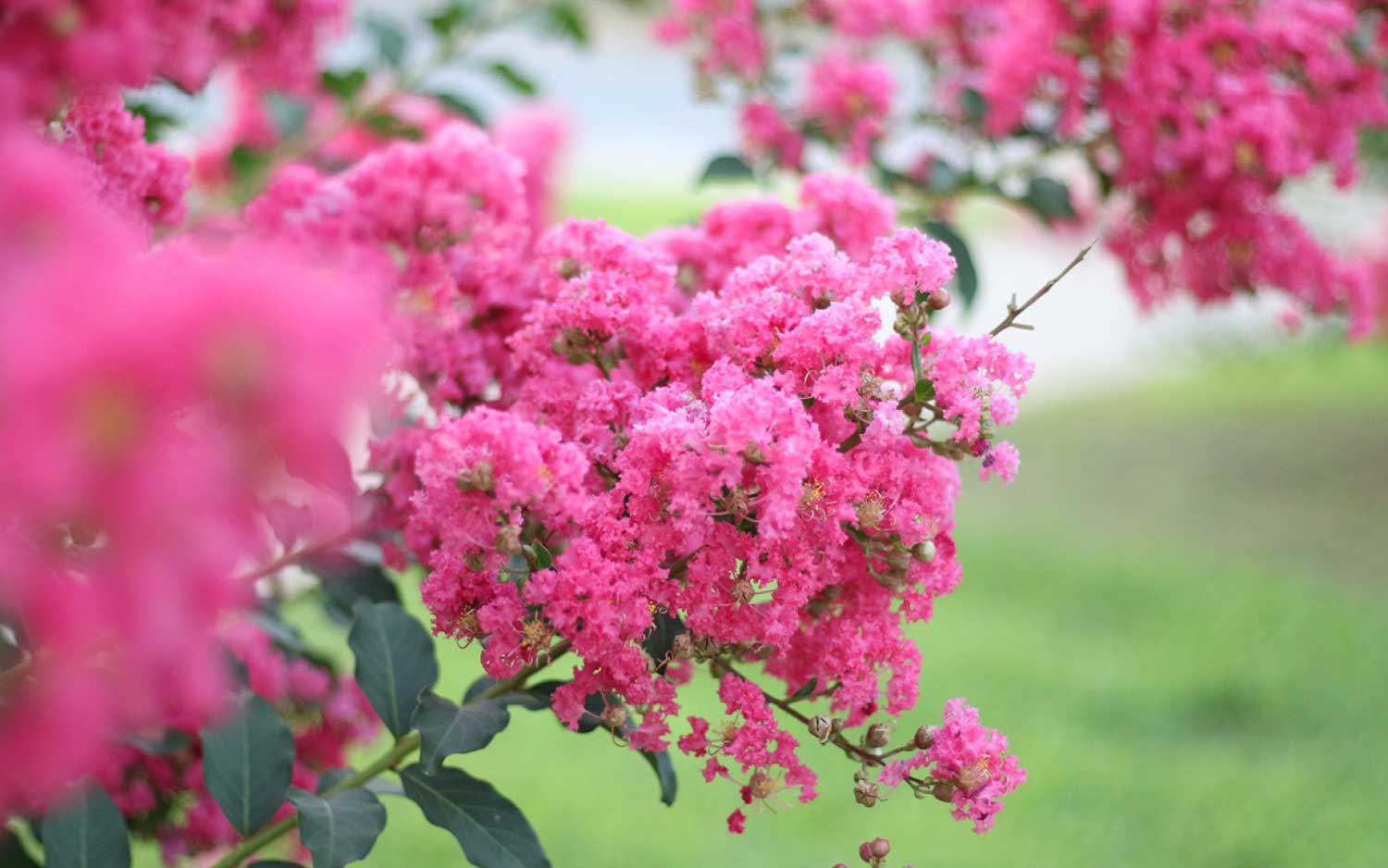Pruning is a good way to improve the plant’s structure, shape and appearance. Removing lower limbs to increase clearance, cutting stems to increase branches and flowers as well as removing dead and damaged branches are great reasons to prune. The practice of topping (drastic removal of large-diameter wood) is what has been called “crape murder.”
Topping is not recommended because it:
- Removes large amounts of food reserve stored in larger branches
- Decreases the tree’s ability to produce food through photosynthesis
- Exposes the crapemyrtle to disease, insects, and wood rot
- Causes dead stubs throughout the tree and can lead to total failure of tree.
On the other hand, “tipping” or “pencil pruning” is a pruning method to remove wood one year old or younger. As the name indicates, only wood about the diameter of a pencil is removed and, while time consuming, it creates an attractive, healthy tree in the long term. Tipping should also remove crossing branches to prevent rubbing of the crossed branches, which can cause disease.
While tipping is generally done in the winter (non-growing season), it can be done during the growing season to promote flowering and remove spent flowers. Tipping in the non-growing season removes spent flowers and seeds, promoting dormant buds below the cut to grow, flower and form on new growth.
So, as a rule, don’t murder your crapes. Prune for safety (clearance from sidewalks and buildings) anytime. Prune for the plant’s health in the winter, tip to promote flowers during the growing season. When planting new crapes, make sure to give them plenty of room and sunlight, and then sit back and enjoy one of the most beautiful trees in your landscape.
